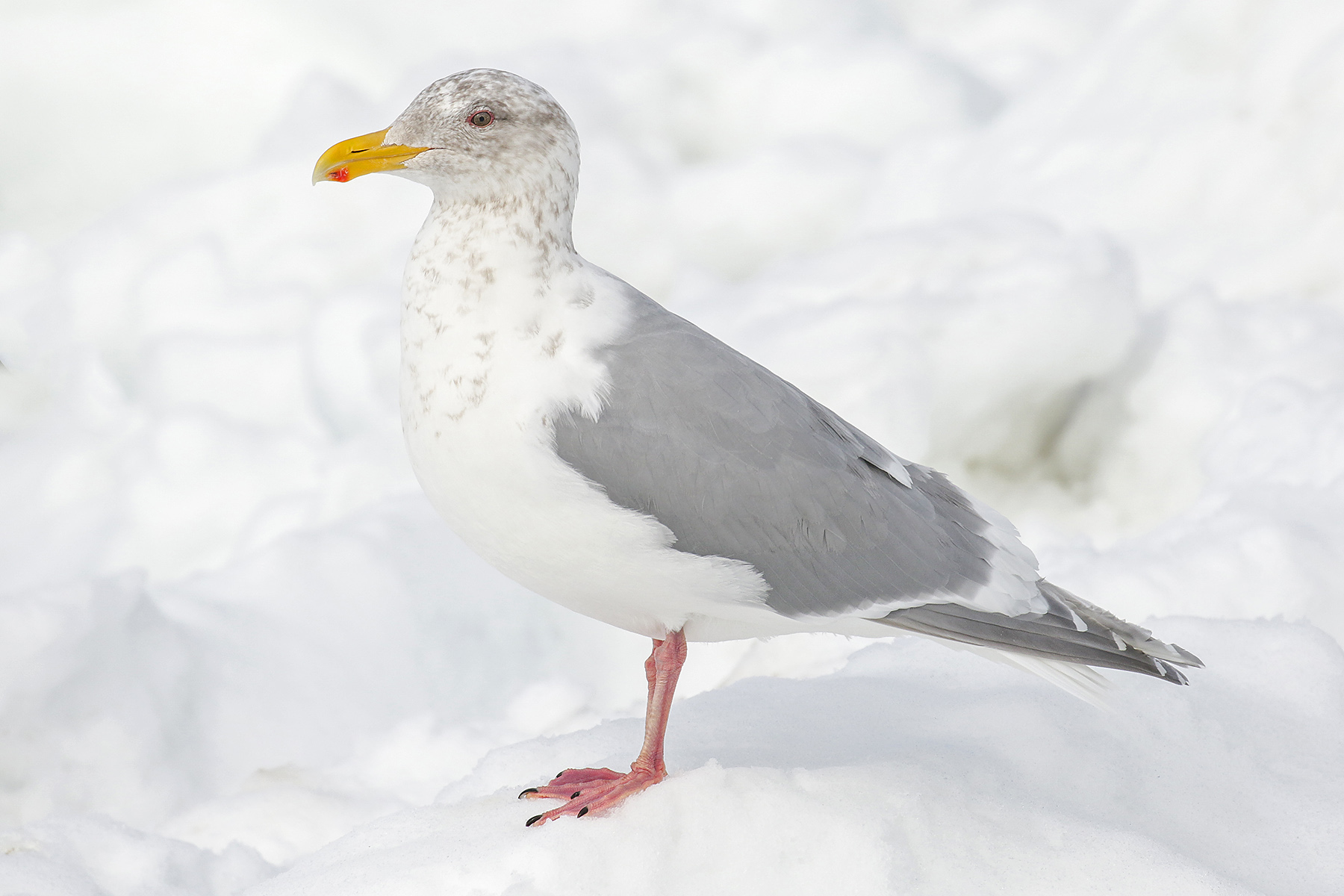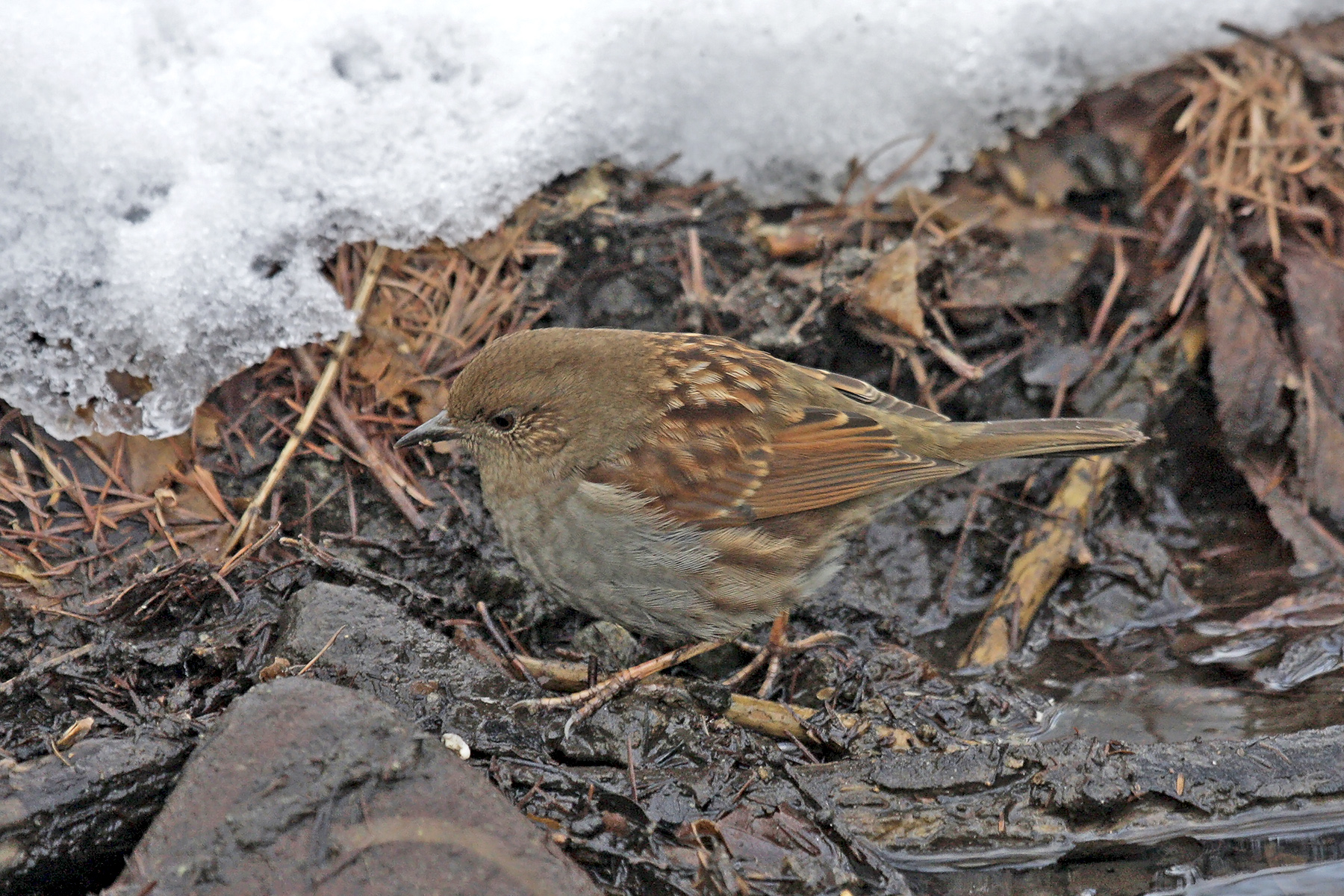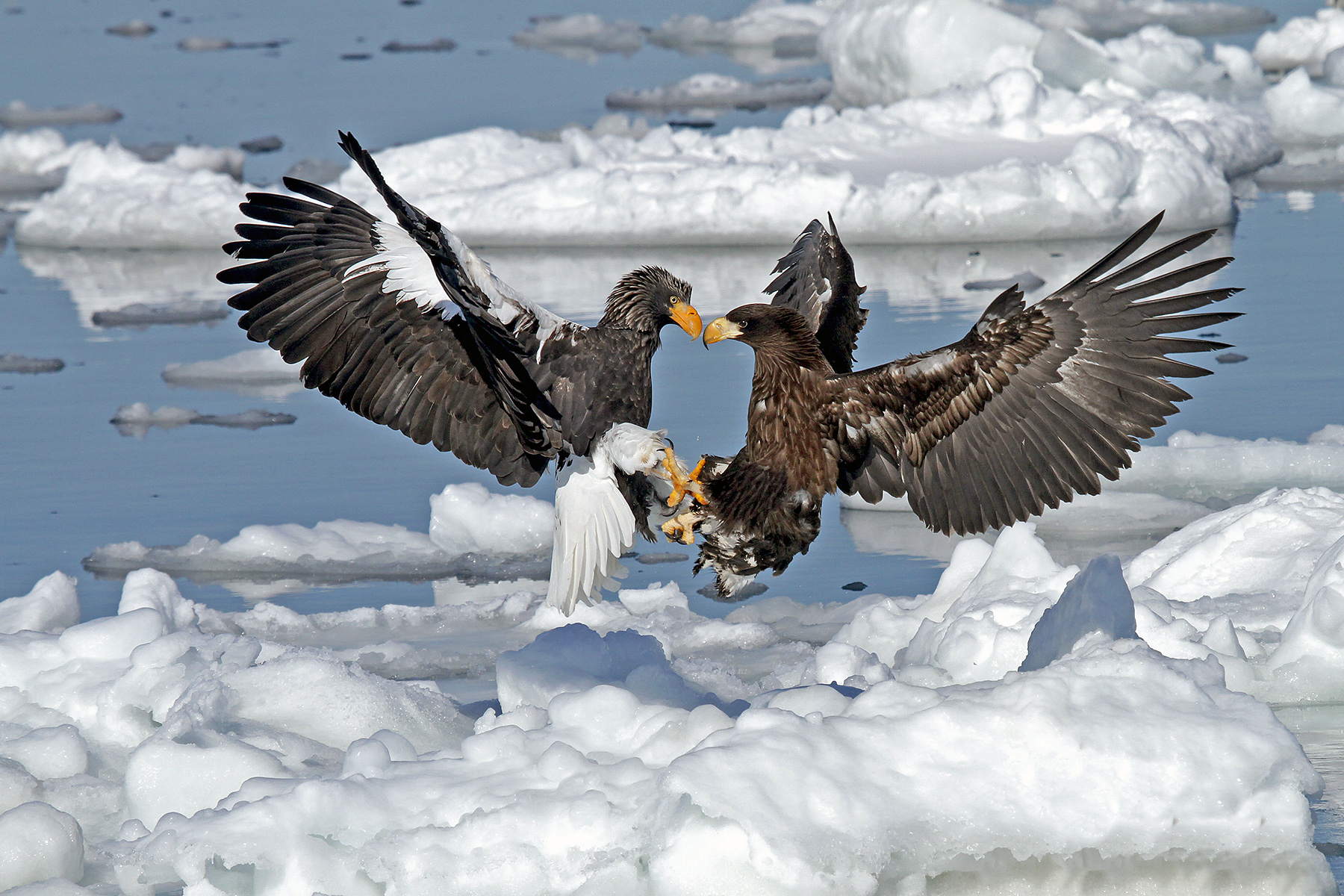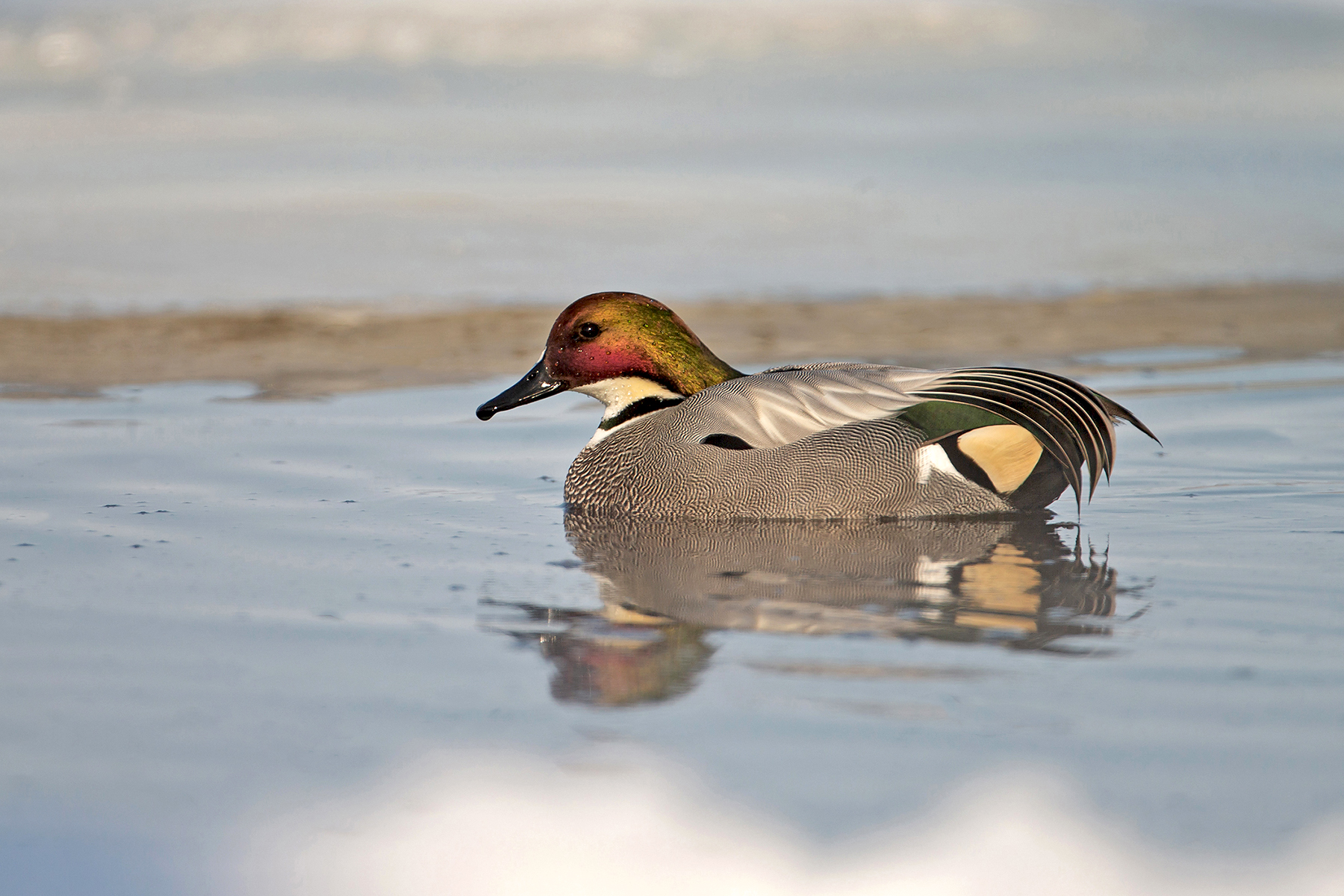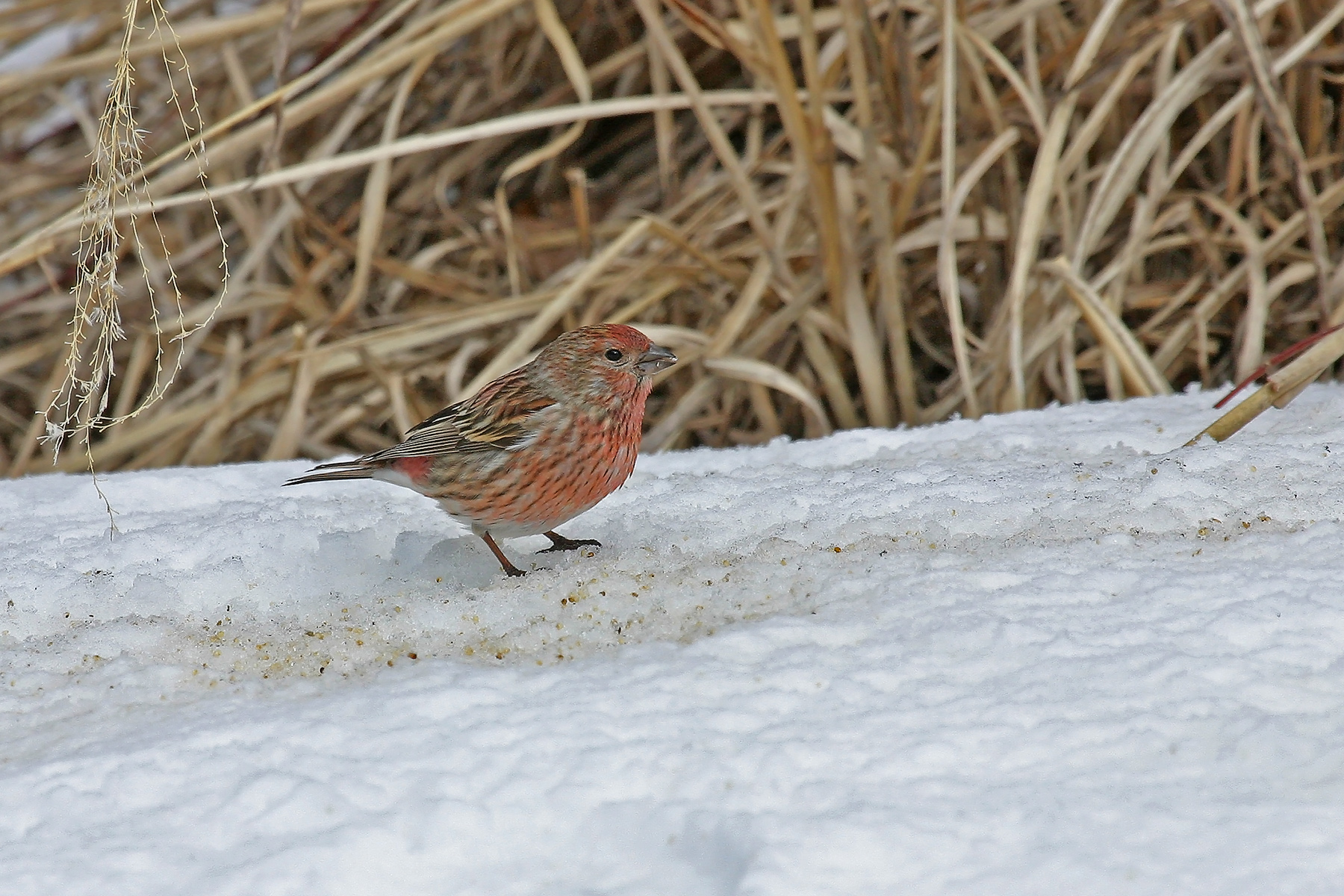JAPAN IN WINTER BIRDING TOUR: DETAILED ITINERARY
Japan in Winter: Day 1 Our tour begins this morning at our hotel near Haneda Airport, Tokyo. We will then transfer to Karuizawa, situated in the mountains of central Honshu to the northwest of the capital. At our lovely hotel, where we stay for three nights, excellent food and warm hospitality await us. This afternoon we will have our first opportunity to explore this fascinating area.
There are international flights into Haneda arriving early this morning in time for the tour start or we can book you into a hotel near the airport if you are arriving the previous day.
Japan in Winter: Days 2-3 This attractive region of rugged peaks and forested valleys is excellent for birding. Much of our time will be spent in the snow-covered deciduous forests where at this season some exciting winter visitors will have swelled the ranks of the resident birds. Amongst the more interesting species that we should find here are the endemic Japanese Green Woodpecker, the restricted-range Japanese Pygmy Woodpecker, the handsome breeding-endemic Japanese Wagtail, the near-endemic Brown-eared Bulbul, the near-endemic Japanese Accentor, the attractive, restricted-range Varied Tit, the impressive, restricted-range Japanese Grosbeak (often in large flocks at bird feeders) and winter visitors such as the beautiful, restricted-range Japanese Waxwing (present in the area during February most years, though somewhat erratic), Red-flanked Bluetail, Daurian Redstart, Dusky Thrush, the lovely Siberian Long-tailed Rosefinch, and Rustic Bunting. Copper Pheasants are still fairly common here, and although they are shy we have a good chance of seeing this splendid endemic species during our stay. In some winters Pallas’s Rosefinches from Siberia frequent these valleys, sometimes visiting the bird feeders.
Other species we are likely to encounter here include Oriental Turtle Dove, Great Spotted Woodpecker, Brown Dipper, Winter Wren, Long-tailed Tit, Willow Tit, Coal Tit, Japanese Tit, Eurasian Nuthatch, Eurasian Jay, Asian Azure-winged Magpie, Large-billed Crow, Carrion Crow (the local form is sometimes split as Oriental Crow), Eurasian Tree Sparrow, Brambling, Grey-capped Greenfinch, Hawfinch and Meadow Bunting, while Eurasian Bullfinch is occasionally encountered (and the form here is sometimes split as Grey-bellied Bullfinch).
We will also visit a small lake where we will have our first opportunity to see wetland birds. The numbers of wintering ducks are often impressive in East Asia and this small area should produce good numbers of the delightful Smew as well as Chinese Spot-billed Duck, Mallard, Eurasian Wigeon, Eurasian Teal, Gadwall, Common Pochard, Tufted Duck and Common Merganser (or Goosander). We may also find the smart Falcated Duck or the rare but equally beautiful Baikal Teal. Other species often present include Little Grebe, Great Cormorant, Grey Heron, Black Kite (the form here is sometimes split as Black-eared Kite) and Eurasian Coot, while a nearby river holds the localized and unobtrusive Long-billed Plover, which shares the shingle islands with the Black-backed form of the White Wagtail and sometimes the impressive Crested Kingfisher.
Japan in Winter: Day 4 This morning we will drive northwest to Nagano and make a detour up into the mountains where we will spend a couple of hours with the magical ‘snow monkeys’. Made famous by numerous television documentaries and magazine articles, the Japanese Macaques here are both bold and entertaining! With their thick coats covered in snow and ice, they squabble and chase each other over the rocky snow-covered hillsides, perhaps pausing to climb up and play on an unattended tripod before dipping into their natural, thermally-heated ‘hot tub’ for a steamy soak! Up to a hundred or more macaques visit this incredibly scenic site and the whole experience of being in amongst these charismatic primates is quite exhilarating! Whilst here, we are likely to encounter a few common forest birds, including Goldcrest, Eurasian Treecreeper and Eurasian Siskin.
Later we will continue to the Komatsu region on the western (Japan Sea) coast of Honshu for a two nights stay at Kaga. We should arrive in time for some initial exploration.
Japan in Winter: Day 5 Today we will search a series of wetlands on the Japan Sea coast of Honshu where thousands of waterfowl winter. In particular, we will visit the Katano Kamo-ike reserve, a small but attractive lake surrounded by rice fields and patches of woodland, with the coast not far away. The lake is famous as the best place in Japan for seeing the exquisite Baikal Teal; a flock of this endangered bird winters here every year. Other species we should encounter today include Bewick’s Swan (once more considered a full species), Taiga Bean Goose (of the form middendorffii), Tundra Bean Geese (a few, of the form serrirostris, are usually present), Falcated Duck and Grey-headed Lapwing.
A short sea-watching session at the coast may turn up flocks of Ancient Murrelets as well as Red-throated Loon (or Red-throated Diver) and Black-throated Loon (also known as Arctic Loon or Black-throated Diver).
We will also search an area of fields further south, which is the feeding area for a large flock of Greater White-fronted Geese. Some careful searching here may well reveal the presence of one or two Lesser White-fronted Geese. We will also keep a lookout for the attractive, but often secretive, endemic Green Pheasant in this area. This area is also good for vagrants, and species we have seen in the past include Cackling, Swan and Snow Geese, Ruddy Shelduck, Scaly-sided Merganser and Red-billed (or Silky) Starling.
Japan in Winter: Day 6 This morning we will take a flight from Komatsu to Fukuoka, a large city situated at the northern end of the island of Kyushu. From here we will drive south through intensively cultivated lowlands to Izumi for a two nights stay.
On the way, we will call in at a large area of mudflats and sandbanks where a good number of Saunders’s Gulls spend the winter. These rare and little-known gulls feed on crabs, which they find by patrolling the mudflats. Gull aficionados will have a whale of a time here as we can also expect to see Black-headed Gull, Black-tailed Gull, Kamchatka Gull (sometimes split from Common), Vega Gull, Lesser Black-backed Gull (of the form taimyrensis, which may in fact be a hybrid form with Vega Gull), Slaty-backed Gull and, with luck, Mongolian Gull (sometimes split from Caspian). On occasion, the impressive Pallas’s (or Great Black-headed) Gull can also be found here.
Japan in Winter: Day 7 The fallow rice paddies around Arasaki are the site of one of the largest winter gatherings of cranes in all Asia. Depending on the winter, up to 10,000 Hooded Cranes are to be found in the area, in addition to up to 3500 superbly elegant White-naped Cranes, making for one of the world’s top birding spectacles. During our stay at Arasaki, we shall enjoy some wonderful close-up views of the cranes, especially when large numbers gather to be fed directly outside the guesthouse in which we will be staying in the very heart of the reserve! Here they come to feed on the maize and fish put out for them by the reserve warden. At this season there is constant activity as flocks of cranes, often still in family groups, bugle energetically or dance into the air. Others form flocks and fly off, trumpeting loudly as they circle upwards before moving away to feed in the rice fields. We will be on the lookout for a few Sandhill Cranes and Common Crane amongst the thousands of Hooded and White-naped Cranes (and if we are really lucky a vagrant Demoiselle or Siberian!).
Arasaki is of course famous the world over for its amazing crane spectacle, but its diversity of habitats (a mosaic of rice fields, rivers, drainage canals, reedbeds, scrub, woodland and intertidal mudflats) also make it one of the richest places for general winter birding in Japan. Familiar wildfowl are present in large numbers and include Northern Pintail and Northern Shoveler which share the rice fields and the maize with the cranes. Amongst the reedbeds, we will keep a lookout for Chinese Penduline Tits. Japanese Quail can very occasionally be found amongst the rice fields. Along the rivers, we have a second opportunity for Long-billed Plover and Crested Kingfisher, whilst small patches of woodland hold wintering Dusky and Pale Thrushes. A little inland, areas of small-scale cultivation and woodland hold Olive-backed Pipit and Japanese Bush Warbler, while the partly rocky coastline holds Japanese (or Temminck’s) Cormorant.
Other species which we should encounter during our explorations of the Arasaki area include Great-crested Grebe, Black-crowned Night Heron, Great, Little and Eastern Cattle Egrets, Red-breasted Merganser, Osprey, Eastern (or Japanese) Buzzard, Common Kestrel, Peregrine, Common Moorhen, Kentish Plover, Northern Lapwing, Dunlin, Common Snipe, Green and Common Sandpipers, House Swift, Common Kingfisher, Eurasian Skylark, Asian House Martin, Buff-bellied Pipit (of the distinctive form japonicus), Grey Wagtail, Zitting Cisticola, Warbling White-eye, Bull-headed Shrike, Daurian Jackdaw, Rook (this eastern form being a good candidate for a future split as Oriental Rook), White-cheeked Starling, Russet Sparrow, Masked Bunting and Chestnut-eared and Common Reed Buntings. With luck, we will come across one of the more elusive species such as Brown-cheeked (or Eastern Water) Rail or Ruddy-breasted Crake.
We will also visit another locality where we should find the spectacular Mandarin Duck and White-bellied (or Japanese Green) Pigeon, while amongst some nearby paddies we should find Eastern Marsh Harrier and Red-throated Pipit.
Japan in Winter: Day 8 After spending much of the day at Arasaki we will drive up into the highlands of Kyushu to Mi-ike for a two nights stay.
Japan in Winter: Day 9 This morning we will start early and drive to the east coast of Kyushu with the aim of locating one of Japan’s most elusive specialities, the endangered Japanese Murrelet. We will search harbours and headlands close to its largest known breeding colony (on an offshore islet), and we have an excellent chance of finding this globally threatened species. We may even be able to arrange for a short boat trip to allow us closer views of this tiny sea-dweller. During the pursuit, we may well come across Eastern Reef Egret and Blue Rock Thrush, and we will have another opportunity to see Japanese Cormorants and study puzzling gulls.
Later we will visit a small lake set in a forest where a number of Mandarin Ducks are often present amongst the wintering wildfowl, and where we should also find the gorgeous Yellow-throated Bunting and perhaps Ryukyu Minivet, here at the northern limit of its range. We will also call in at an interesting estuary where we are likely to get good views of Black-faced Spoonbills and perhaps also Eurasian Spoonbills. The east coast of Kyushu has a very different feel from the west coast, the milder climate providing a suitable winter home for Barn Swallows.
Japan in Winter: Day 10 The impressive and famous crater lake at Mi-ike holds good numbers of wintering ducks, sometimes including a few Baikal Teal, whilst the surrounding forest holds some interesting birds. Ryukyu Minivet (only relatively recently found to be resident in southern Kyushu) occurs here amongst the huge deciduous trees, as does White-backed Woodpecker, and we could also come across the superb White’s Thrush (this species seems to wobble on its legs as it feeds). In particular, we will search through the wintering buntings for the secretive Grey Bunting.
Later we will take a flight from Kagoshima to Tokyo and then a connecting flight to Kushiro on the northern island of Hokkaido for an overnight stay nearby.
Japan in Winter: Day 11 Our main priority this morning will be to watch the magnificent Red-crowned (or Japanese) Cranes that winter in this area. Red-crowned Cranes are widely dispersed across eastern Hokkaido during the breeding season, but in the winter months, they are concentrated in the complex of damp fields and marshlands to the north of Kushiro. We shall begin the day at a river where many of the cranes roost, hoping it is cold enough to create ideal viewing conditions. As the steam rises from the river, the cranes slowly wake up and begin bugling, the thick hoar frost on the riverside trees adding to the romantic scene. Once the temperature begins to creep up, the cranes leave their roost and move off to feed. In the morning a large flock, generally of over 100 birds, gathers at a traditional spot. At this season the Red-crowned Cranes are dancing frequently and as one pair begins its courtship dance the infection spreads through the flock like a wave until dozens of striking black and white birds are leaping into the air or throwing back their heads and bugling towards heaven. It is a thrilling spectacle, and as we watch this wonder of nature we will truly appreciate why we have come all the way to this remote corner of Japan.
We will also explore the deciduous woodlands nearby. Marsh Tits are not uncommon here and we may well see the very pale and attractive asiatica subspecies of the Eurasian Nuthatch. We have a good chance of coming across a sleepy Ural Owl.
Later we will drive to Rausu, situated at the base of the Shiretoko peninsula on the east coast of Hokkaido, for an overnight stay. We will arrive in good time for we have an exciting evening ahead of us!
This area of eastern Hokkaido is home to a small population of the almost mythical Blakiston’s Fish Owl and we have an excellent chance of seeing this magnificent bird during our stay in the area. Only about 60 pairs are believed to survive in Hokkaido, but here at Rausu, the local people are very fond of ‘their’ owls and every evening, as dusk approaches, the owners of a small minshuku put out a few small fish for them at a floodlit pond. After an early dinner at our hotel, we will visit the minshuku in order to watch for the owl. It usually does not take too long before this huge owl puts in an appearance, gliding down to the edge of the pond, hopping into the water and grabbing its first snack of the evening! A pair of Blakiston’s Fish Owls regularly comes to the pond, and both birds may make several visits during the course of a night. Watching these splendid birds from only a short distance away from our little guesthouse is indeed a rare privilege and surely ranks amongst the world’s most extraordinary birding experiences!
Japan in Winter: Day 12 Rausu and the Shiretoko Peninsula are justly famous for having the largest accessible winter gathering of Steller’s Sea Eagles. The birds migrate southwards from their breeding grounds in eastern Siberia and Kamchatka to feed on the concentrations of fish in the coastal waters and lakes of Hokkaido. By February up to 1000 or more of these splendid creatures can be found in the area. Although conditions vary from year to year (and indeed from week to week!), there is usually some sea ice close to Rausu. This morning, conditions permitting, we will take a boat out to the ice for what has to be one of the most amazing adventures any of us will have been on!
After we set off, we will soon be accompanied by hordes of Slaty-backed, Glaucous and Glaucous-winged Gulls as we head over to the sea ice on a boat laden with treats for our avian friends. Soon some bigger shapes appear, and as the sun rises we will be surrounded by incredible Steller’s and White-tailed Sea-Eagles! Over the next hour or two, we will be totally awestruck, watching dozens of these magnificent giants fighting over fish just a few metres away with towering snow-covered peaks as a backdrop. Often the adult Steller’s Sea Eagles come very close, giving superb views of their massive yellow bills and striking pied plumage. It really is a once-in-a-lifetime experience!
(Even if the sea ice is absent at Rausu, we will still enjoy awesome close views of the eagles as they perch in trees and on rocks all the way along the coastline! In these conditions the fish are placed for the eagles on the sea wall or in the sea.)
With luck, we will also see some Largha Seals, while on returning to the harbour we will have a good look at some fabulous Harlequin Ducks.
Later we will drive southwestwards along the coast of Hokkaido to Nemuro for a two nights stay.
Along the way, we will stop off to admire a large wintering flock of Whooper Swans, surviving in these harsh conditions thanks to regular handouts of food from local people, who also try to keep the ice broken. These majestic swans have in consequence become very tame, as have the accompanying Northern Pintails which look quite spectacular at close range against a backdrop of ice.
We will also see yet more magnificent Steller’s Sea Eagles, either perched in trees or on pylons or soaring above the wintry landscape (sometimes in groups). A large number of White-tailed Eagles also occur in the area, but whereas these seem very large raptors elsewhere, here they seem more like buzzards measuring themselves against eagles! All in all, the spectacle of the eagles of Hokkaido is something one never forgets!
Japan in Winter: Day 13 Nemuro is situated at the base of the ornithologically famous Nemuro peninsula and the surrounding area provides some of the finest birding in the Japanese islands. The countryside around Lakes Furen and Chobushi, which will be frozen over at the time of our visit, is predominantly forested and after a sudden snowfall the landscape takes on a real ‘winter wonderland’ appearance. Landbirds are rather limited at this time of year, so it is the sea coasts and harbours that hold the most attraction for the birdwatcher.
At Cape Nosappu the waters are thronged with sea ducks, including flocks of Long-tailed Ducks, Common Goldeneyes, and Stejneger’s and Black Scoters. Pelagic and sometimes Red-faced Cormorants feed offshore, whilst Spectacled Guillemots, Common and sometimes Thick-billed Murres (or Common and Brünnich’s Guillemots), Crested and Least Auklets, and Ancient Murrelets can be seen bobbing up and down in the waves, although often quite far out. In order to obtain much better views of these alcids, we will take a short boat trip out of one of the local harbours.
Other species we can expect to see in the region include Red-necked Grebe and Greater Scaup, while Pacific Loons are occasionally present. With luck, we will encounter one or two of the more erratic winter visitors such as Rough-legged Buzzard, Short-eared Owl, Common Redpoll or Snow Bunting. Mammals are mostly inconspicuous, but large numbers of Sika Deer can be found foraging along forest edges and Harbour (or Common) Seals frequent quiet stretches of water along the shoreline.
Japan in Winter: Day 14 Today we will head for the Nakashibetsu area for an overnight stay. On the way, we will make a detour along the coastline as far as Cape Kiritappu, as this is a regular wintering location for the attractive Asian Rosy Finch, and our explorations may also produce one or more new seabirds for us.
Our overnight accommodation provides a further opportunity to see Blakiston’s Fish Owl and the bird feeders attract Great Spotted Woodpecker, Eurasian Jay (of the form brandti) Eurasian Nuthatch, Marsh Tit, Long-tailed Bushtit (of the lovely white-headed type), Hawfinch and sometimes the endearing Sable.
Japan in Winter: Day 15 Around Nakashibetsu we have a good chance of encountering Solitary Snipe, a wintering species from Siberia that is a much-wanted speciality we only otherwise see on tours to Ladakh in the Western Himalayas
Later we will head for Kushiro Airport and we are sure to see some more Red-crowned Cranes along the way. Our Japan in Winter birding tour ends with an evening flight to Tokyo Haneda.
There are international flights out of Haneda departing later this evening or after midnight, or we can book you into a hotel near the airport if you are departing the following day.
PELAGIC EXTENSION
Japan in Winter (Pelagic): Day 1 We will overnight near Haneda airport.
Japan in Winter (Pelagic): Day 2 Today we will visit one or more of the many parks and nature reserves in the Tokyo area. This will produce photographic opportunities for a number of commoner species and should turn up Brown-headed Thrush and perhaps a vagrant duck or shorebird, as well as give us better chances for Brown-cheeked (or Eastern Water) Rail and Asian Azure-winged Magpie.
Later we will board our vessel (a large ferry) and begin our exciting pelagic into the waters south of Tokyo. We will overnight in comfortable cabins on board.
Japan in Winter (Pelagic): Day 3 We will spend all day at sea, apart from a brief stop in the Izu islands. This is a great time of year for watching albatrosses, and we have an excellent chance of finding Black-footed and Laysan Albatrosses and that holy grail of them all, the spectacular and rare Short-tailed Albatross. We have a very good chance of finding this species and we may well encounter adults as well as immature birds. Whilst looking for albatrosses, we are also likely to encounter Northern Fulmar, Streaked Shearwater, Tristram’s Storm Petrel (which is largely a winter breeder), Pomarine Jaeger (or Pomarine Skua) and Black-legged Kittiwake, and we may well turn up one or two surprises.
In the evening we will return to Tokyo, where the extension ends.
There are international flights out of Haneda departing later this evening or after midnight, or we can book you into a hotel near the airport if you are departing the following day.





































